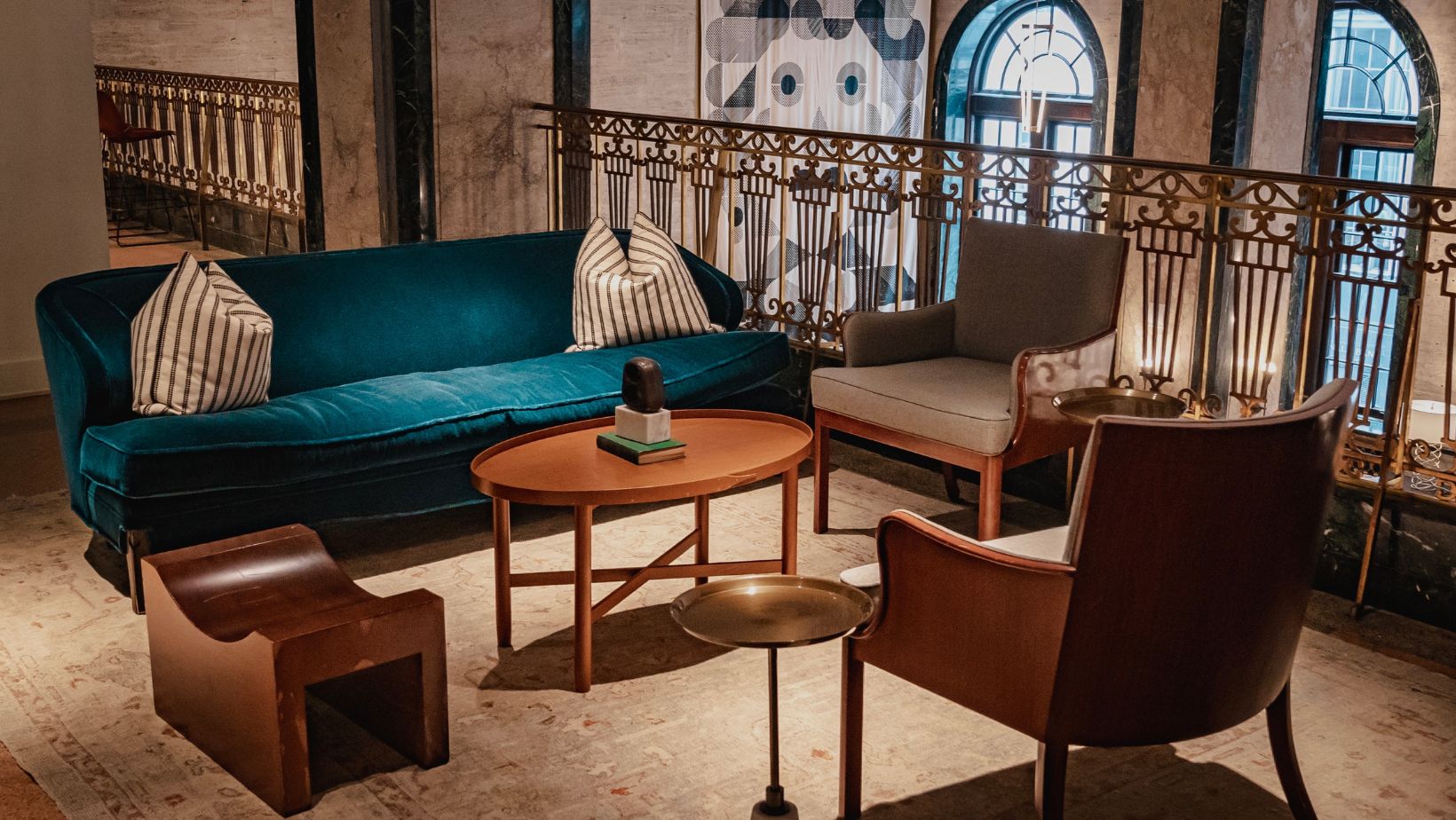The furniture industry has shown remarkable adaptability and growth, especially in the aftermath of the COVID-19 pandemic. In 2021, revenues from online furniture sales in the United States reached an impressive $132.7 billion, with projections indicating they could rise to $208.2 billion by 2025. This growth reflects not only a sustained demand for furniture but also a significant shift toward digital shopping experiences facilitated by furniture store ecommerce software. This transformation is driven by evolving consumer preferences, particularly through the utilization of eCommerce software tailored for furniture retailers.
Navigating Challenges with Creative Solutions
The pandemic served as a catalyst for innovation within the retail sector. Furniture retailers were forced to rethink their approaches to engage customers in a socially-distanced world. To adapt, many businesses adopted interactive online shopping experiences, streamlined delivery processes, and introduced flexible payment options, such as “Buy Now, Pay Later” (BNPL) schemes. These adaptations were crucial not just for boosting online sales during uncertain times, but they continue to influence the industry today.
As more consumers take an interest in redecorating and interior design, spurred by lifestyle blogs and social media platforms like Instagram and Pinterest, the demand for furniture and home décor has surged. Consequently, furniture retailers must stay ahead of emerging trends to build customer loyalty. Innovative marketing strategies that resonate with consumer expectations are essential for sustained growth. In this article, we will delve into the most significant trends shaping furniture eCommerce and highlight lessons from successful brands that can be applied across the industry.
Key Trends Shaping Furniture eCommerce
The following trends are currently transforming the landscape of furniture eCommerce:
The Impact of Augmented Reality (AR) and Virtual Reality (VR)
Historically, one of the main challenges faced by furniture shoppers has been visualizing how a product will fit and look in their homes. The limitations of online shopping exacerbate this issue since customers cannot physically interact with items before making a purchase. However, advancements in AR and VR technologies have started to revolutionize this experience.
AR allows customers to place accurate 3D models of furniture in their living spaces, enabling them to visualize how a piece will complement their existing décor. This “try before you buy” experience significantly enhances consumer confidence in their purchasing decisions. Notable examples of this innovation include the IKEA Place app, which allows users to position furniture virtually in their homes, as well as similar functionalities from retail giants like Amazon and Target.
The Rise of Personalized Customer Experiences
Today’s consumers have come to expect shopping experiences tailored to their unique preferences. Research indicates that a staggering 52% of customers desire personalized engagement from brands, which extends beyond simple greetings in emails.
To meet these expectations, many online furniture retailers are enhancing their offerings with product customization options. These can range from an array of color selections to different materials and finishes. Some brands take personalization a step further, allowing customers to choose the fillings in cushions or even design their own lampshades using personal photos.

This level of customization not only improves customer satisfaction but also fosters brand loyalty.
Embracing Purchase Now, Pay Later (BNPL) Options
With rising economic uncertainty, particularly among younger generations, alternative payment methods like Buy Now and Pay Later have gained significant traction. Approximately 43% of millennials and 32% of Gen Z consumers express concern about their financial debt, prompting a preference for payment methods that offer greater flexibility.
BNPL services allow customers to break down the total cost of a purchase into manageable, typically interest-free installments. This approach offers a quicker approval process compared to traditional credit cards, reducing the risk of accumulating debt. Many businesses have reported an increase in online sales after implementing BNPL options, leading several furniture retailers to adopt this payment method. Furthermore, some eCommerce platforms offer financing with promotional 0% interest rates for limited terms, providing additional flexibility for consumers. However, it’s crucial to note that failing to repay within the promotional period can lead to significant interest charges.
Subscription Services and Furniture Rentals
Another emerging trend is the rise of subscription plans for furniture, allowing customers to pay a fraction of the retail price to use products without the burden of loans or interest. This model enables consumers to return items, swap them for different pieces, or choose to purchase them outright.
By offering subscription options, furniture retailers can create a recurring revenue model that appeals to consumers seeking flexibility and lower initial costs. This innovative approach aligns well with the increasing consumer focus on sustainability, as it allows for a more circular economy in furniture consumption.
The Popularity of Modular Furniture
The shift toward remote work has led to a significant increase in the demand for modular furniture. Between 2016 and 2021, this segment experienced a remarkable compound annual growth rate of 15%. The popularity of modular furniture can be attributed to several key factors:
- Flexibility: Pre-made units can be configured in various arrangements to suit small or uniquely shaped spaces.
- Customization: Consumers can personalize their setups to match their design preferences by mixing and matching components.
- Sustainability: Many modular furniture options are made from recycled materials and produced using more environmentally friendly manufacturing processes.
- Cost Efficiency: Modular designs often prove more economical over time, as they offer multifunctional solutions.
Retailers like USM have embraced this trend by providing online configurators that allow shoppers to design their own furniture pieces from the comfort of their homes. Moreover, modular furniture simplifies inventory management for retailers, enabling them to offer a broader range of choices without needing multiple designs.
A Focus on Customer Happiness and Satisfaction
As the eCommerce furniture industry continues to evolve, a strong emphasis on enhancing customer satisfaction has emerged. Retailers are increasingly recognizing the significance of the customer experience, especially for products that entail substantial investments of both time and money.

To deliver exceptional customer experiences, many online furniture stores are now providing expert consultations and design services during the shopping process. This commitment to customer support extends to the utilization of advanced analytics and big data to predict shopping behaviors, personalize email marketing efforts, and enhance overall responsiveness.
In a highly competitive market, retaining customers is vital for the sustained growth of any home décor business. Traditional advertising methods, such as Facebook ads, have become less effective due to rising customer acquisition costs. Therefore, brands must prioritize being accessible and responsive through channels like SMS marketing while enhancing the overall shopping experience.
Building a Successful Furniture eCommerce Business
To thrive in the furniture eCommerce space, businesses must prioritize providing an exceptional shopping experience that captivates consumers. This involves creatively engaging customers throughout the selection and purchasing processes. Strategies to consider include:
- Offering live support and expert guidance.
- Implementing interactive tools that allow customers to visualize and design their ideal spaces.
- Utilizing AR and VR technologies to enhance the shopping experience.
- Ensuring a wide array of customization and payment options.
Ultimately, the key to success lies in understanding that you’re not just selling furniture; you’re selling an experience that resonates with customers. As the furniture industry continues to adapt and innovate, businesses that embrace these trends and prioritize customer satisfaction will stand out in an increasingly crowded market.
Conclusion
The furniture industry is undergoing a significant transformation, propelled by the rise of e-commerce and evolving consumer behaviors. By staying informed about the latest trends and prioritizing innovative strategies, retailers can effectively meet customer expectations and drive long-term growth. Whether through augmented reality, personalized experiences, flexible payment options, or subscription models, embracing these trends is crucial for success in the ever-evolving world of furniture eCommerce. The future holds exciting possibilities for those willing to adapt and innovate, ensuring that the furniture industry remains vibrant and resilient for years to come.


